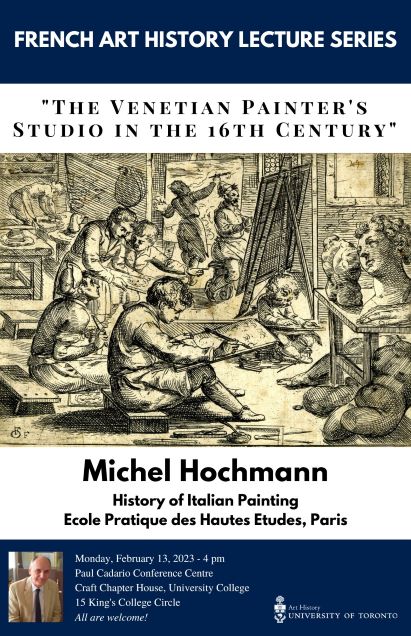The Venetian painter's studio in the 16th century
When and Where
Speakers
Description
"The Venetian painter's studio in the 16th century: some remarks"
Michel Hochmann
History of Italian Painting
Ecole Pratiques des Hautes Etudes, Paris
We often have an idealized vision of the painter's studio during the Renaissance, based on the example of a few exceptional cases such as Raphael's studio. We often imagine Titian or Tintoretto surrounded by a large number of collaborators. We will seek to reflect on the actual composition of the Venetian workshops, on the study material they had at their disposal, on the way the master organized the work of his assistants. We will take advantage of the surviving documentation (guild regulations, inventories, apprenticeship contracts), but also of the contributions of scientific examinations on the paintings of this period. We will consider the great masters, but also the coffer painters or the madoneri workshops that produced devotional paintings in large numbers.
Michel Hochmann specialized in Italian (especially Venetian) art of the Renaissance. His Ph. D. was dedicated to the relationship between painters and patrons in Venice during the Sixteenth Century (Peintres et Commanditaires à Venise. 1540-1628, Rome, 1992). He also studies the history of collections and the history of painting techniques. He has recently published a book about the painting techniques in Venice during the Sixteenth Century (Colorito. La technique des peintres vénitiens à la Renaissance, Brepols, 2016). He was head of the department of Art History at the French Academy in Rome (Villa Medici). He is, since 2000, professor at the Ecole pratique des Hautes Etudes in Paris, where he teaches the history of Italian painting (XVIth-XVIIth century). He is doyen (dean) of the department of historical and philological sciences at the Ecole pratique des hautes études.



